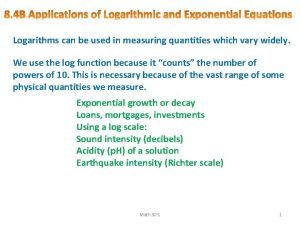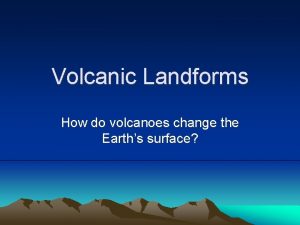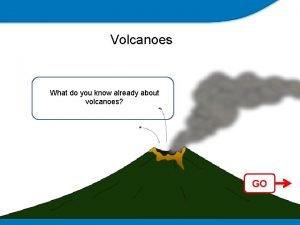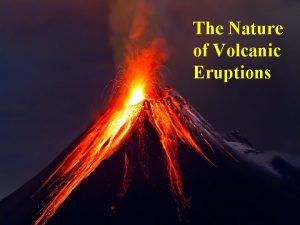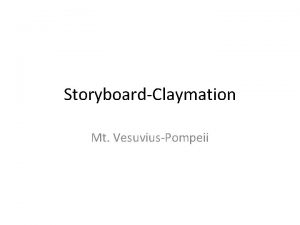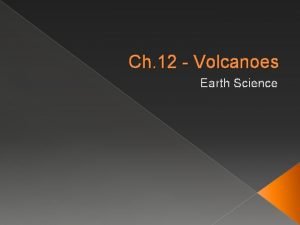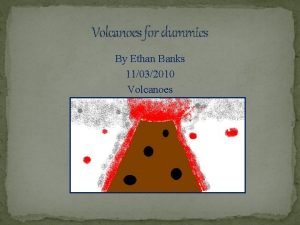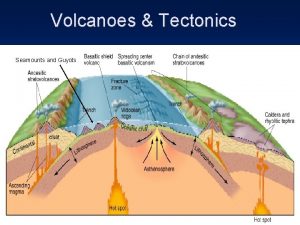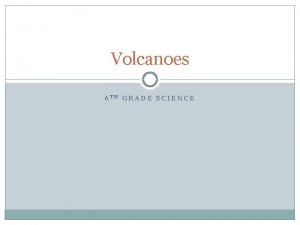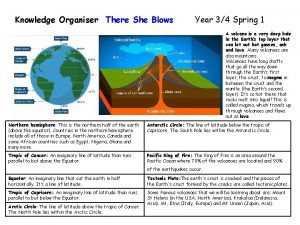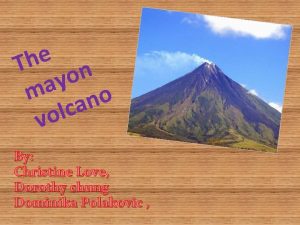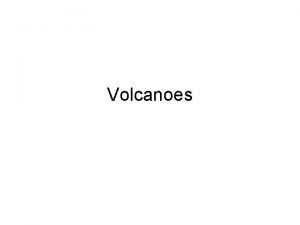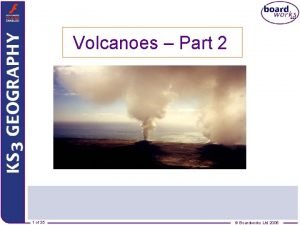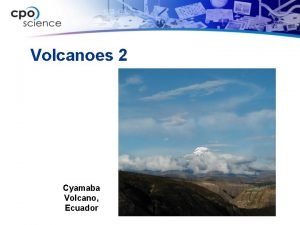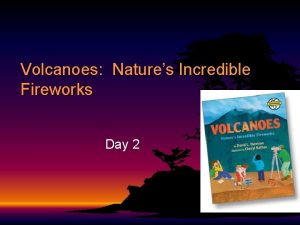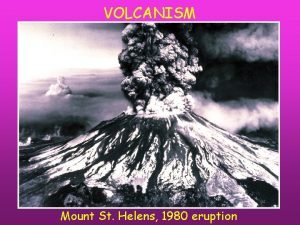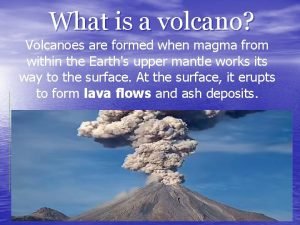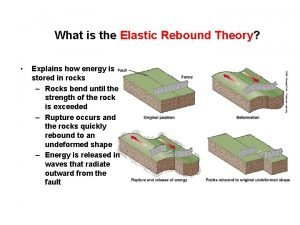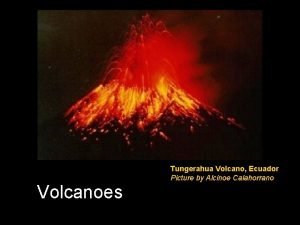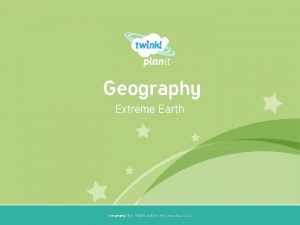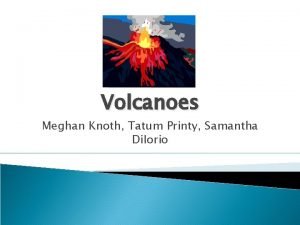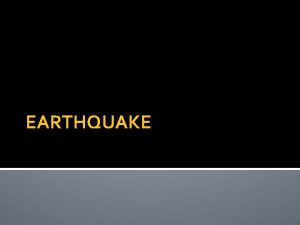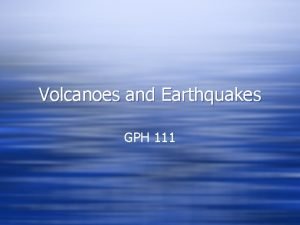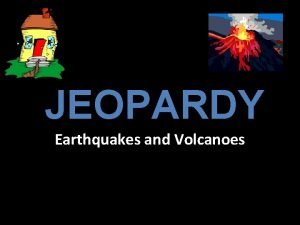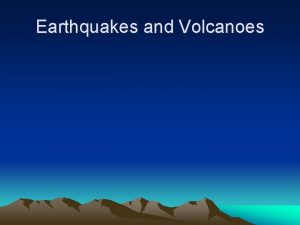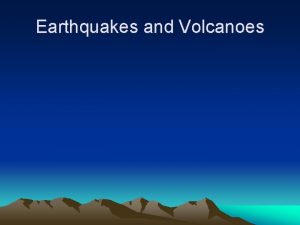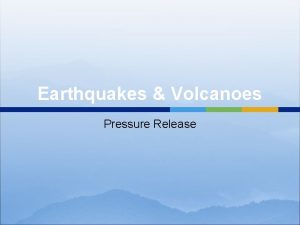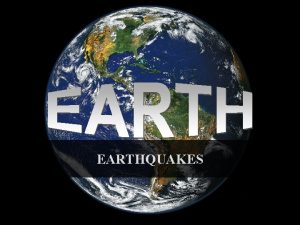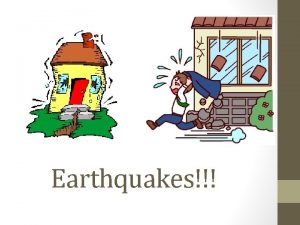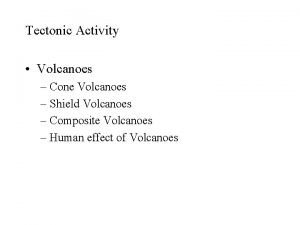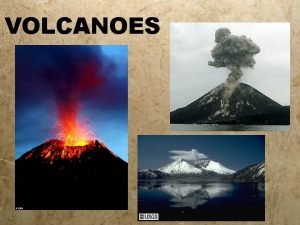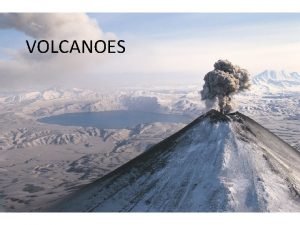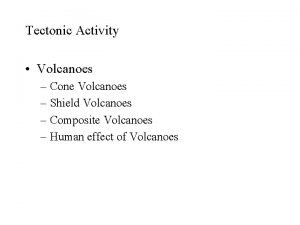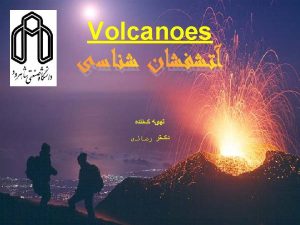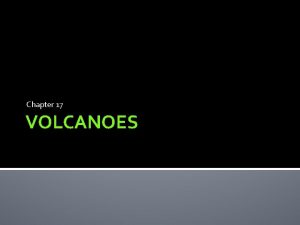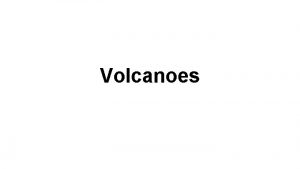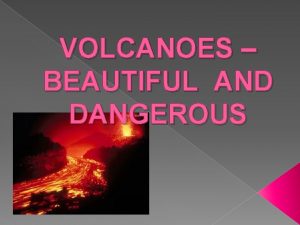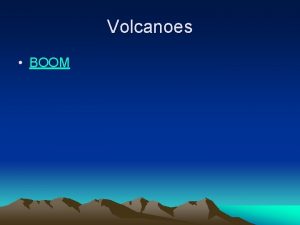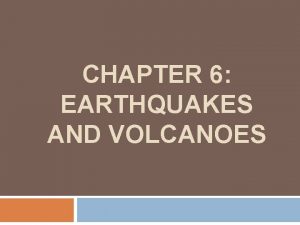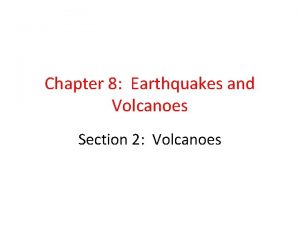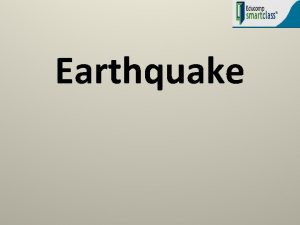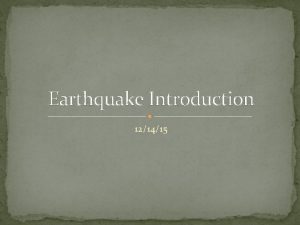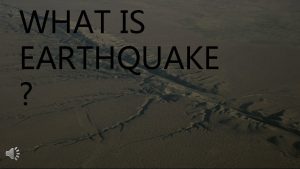Earthquakes Volcanoes 1 What is an earthquake Earthquakes

























- Slides: 25

Earthquakes & Volcanoes

1. What is an earthquake? Earthquakes occur because of a sudden release of stored energy. This energy has built up over long periods of time as a result of tectonic forces within the earth. This sudden motion causes shock waves (seismic waves) to radiate from their point of origin called the FOCUS and travel through the earth. It is these seismic waves that can produce ground motion, which people call an earthquake.

Let’s make sense of some information. Take notes in your margin. First of all what are boundary types?

Write these down and draw a picture of them. The three plate boundaries occur when tectonic plates: Pull away from one another, divergent. Push together, convergent. Rub past one another, transform.

When plates move it causes stress on the surface. Tensional stress occurs when plates are pulled apart. Compressional stress occurs when plates are pushed together. Shear stress is caused when plates rub past one another.

So let’s look at fault types and how stress and boundaries are related to them. Reverse Fault Along a reverse fault, the block of rock above the fault plane moves up relative to the other block. Stress that presses rocks together causes reverse faults. These faults can occur near collision-zone boundaries.

Normal Fault: Along a normal fault, the block of rock above the fault plane slides down relative to the other block. Stress that pulls rocks apart causes normal faults. Earthquakes along normal faults are common near boundaries where tectonic plates are moving apart, such as in the Great Rift Valley of Africa.

Strike Slip Faults Along a strike-slip fault, blocks of rock move sideways on either side of the fault plane. Stresses that push blocks of rock horizontally cause earthquakes along strikeslip faults. These faults can occur where plates scrape past each other. The San Andreas Fault is a strikeslip fault.

Explain how earthquakes transfer energy to the earth’s surface? Earthquakes transfer energy to the earth’s surface in the form of waves.

What is the point beneath the earth’s surface called where the actual breaking occurs in an earthquake?

What is the point on the earth’s surface where the earthquake occurs called?

Earthquake Waves: There are several different kinds of seismic waves, and they all move in different ways. The two main types of waves are body waves and surface waves. Body waves can travel through the earth’s inner layers. Surface waves can only move along the surface of the planet like ripples on water. Earthquakes radiate seismic energy in both body and surface waves.

Primary Waves: The first kind of body wave is the P wave or primary wave. This is the fastest kind of seismic wave, and the first to be detected by seismic stations. They can move through solids and liquids. P waves are sound waves or compressional waves.

P waves Continued… Compressional waves push and pull materials back and forth. Particles move in the same direction that the wave is moving. This is also the direction energy is traveling in, or the direction of wave propagation.

Secondary Waves: The second type of body wave is the S wave or secondary wave. These waves arrive second place at the seismic stations. They can travel through only solid rock or extremely rigid materials.

Secondary Waves Continued… S waves move rock particles up and down, or side to side, perpendicular to the direction that the wave is traveling or the direction of wave propagation.

Surface Waves: Traveling only through the crust, surface waves are of a lower frequency than body waves, and are easily distinguished on a seismogram. They arrive aftre body waves, but surface waves are the most damaging type of earthquake waves. The deeper the earthquake, the lower the strength of surface waves.

Surface Waves: Love Waves These are the fastest surface wave and they move the ground from side-to side. Reyleigh Waves These waves roll along the ground just like a wave rolls across a lake or ocean. Because it rolls, it moves the ground up and down and side to side in the same direction that the wave is moving.

What instrument is used to measure an earthquake? A seismograph.

Who is the scientist that studies earthquakes? A seismologist!

Okay, on to Volcanoes! What causes a volcano to erupt? Earth’s crust is made up of huge slabs called plates, which fit together like a jigsaw puzzle. These plates sometimes move. Between the Earth’s crust and the mantle is a substance called magma which is made of melted rock and gases. When these plates move, either together, or apart magma can either be squeezed out or released.

What is the difference between granitic and basaltic lava? Granitic is below the surface. Basaltic lava is on the earth’s surface.

What type of volcano would you find each type of lava in? Really you would find basaltic and granitic lava/magma in all three types of volcanoes. Depending on the volcano, it will just come out differently.

Volcano Types and information about each. Volcano Type Cinder Cone Shield Volcano Composite Volcano Explosive? Yes No Yes Example Chamberlain Hill, Pilot Butte, Craters of the Moon Hawaiian Islands, Mount Sylvania, Highland Butte, Larch Mountain Mount Baker, Mount St. Helens, Mount Hood, Mount Shasta Type of material released. Lava, Fine Ash & Cinders (Rock Fragments) Liquid Lava Layers of Lava and Ash Shape of Volcano (Description ) Steep sides, lava shoots out and piles up around base. Very gentle slopes, with upward convex. Gentle lower slopes with steep upper slopes & crater. Drawing of Volcano

What does energy have to do with volcanoes? Energy is transferred from the earth’s interior to the surface through volcanoes in the form of heat, light mechanical and sound.
 Chapter 8 earthquakes and volcanoes
Chapter 8 earthquakes and volcanoes Http://earthquake.usgs.gov/earthquakes/map/
Http://earthquake.usgs.gov/earthquakes/map/ How do volcanoes change landforms
How do volcanoes change landforms What do you already know about volcanoes?
What do you already know about volcanoes? Types of volcanoes
Types of volcanoes How do volcanoes erupt
How do volcanoes erupt Volcanoes of italy map
Volcanoes of italy map How are volcanoes formed
How are volcanoes formed Ring of fire volcanoes
Ring of fire volcanoes Paboeboe
Paboeboe Three main ways volcanoes are created
Three main ways volcanoes are created Name volcanoes
Name volcanoes Volcanoes knowledge organiser
Volcanoes knowledge organiser Interesting facts about mt mayon
Interesting facts about mt mayon Volcanic belts form along _____.
Volcanic belts form along _____. Magma chamber
Magma chamber Cotapoxi
Cotapoxi Volcanoes nature's incredible fireworks
Volcanoes nature's incredible fireworks Where are volcanoes
Where are volcanoes How are volcanoes formed
How are volcanoes formed The elastic rebound theory explains how
The elastic rebound theory explains how What are destructive forces
What are destructive forces Active volcanoes map
Active volcanoes map How are volcanoes made
How are volcanoes made Lava and magma difference
Lava and magma difference Lithosphere definition
Lithosphere definition

